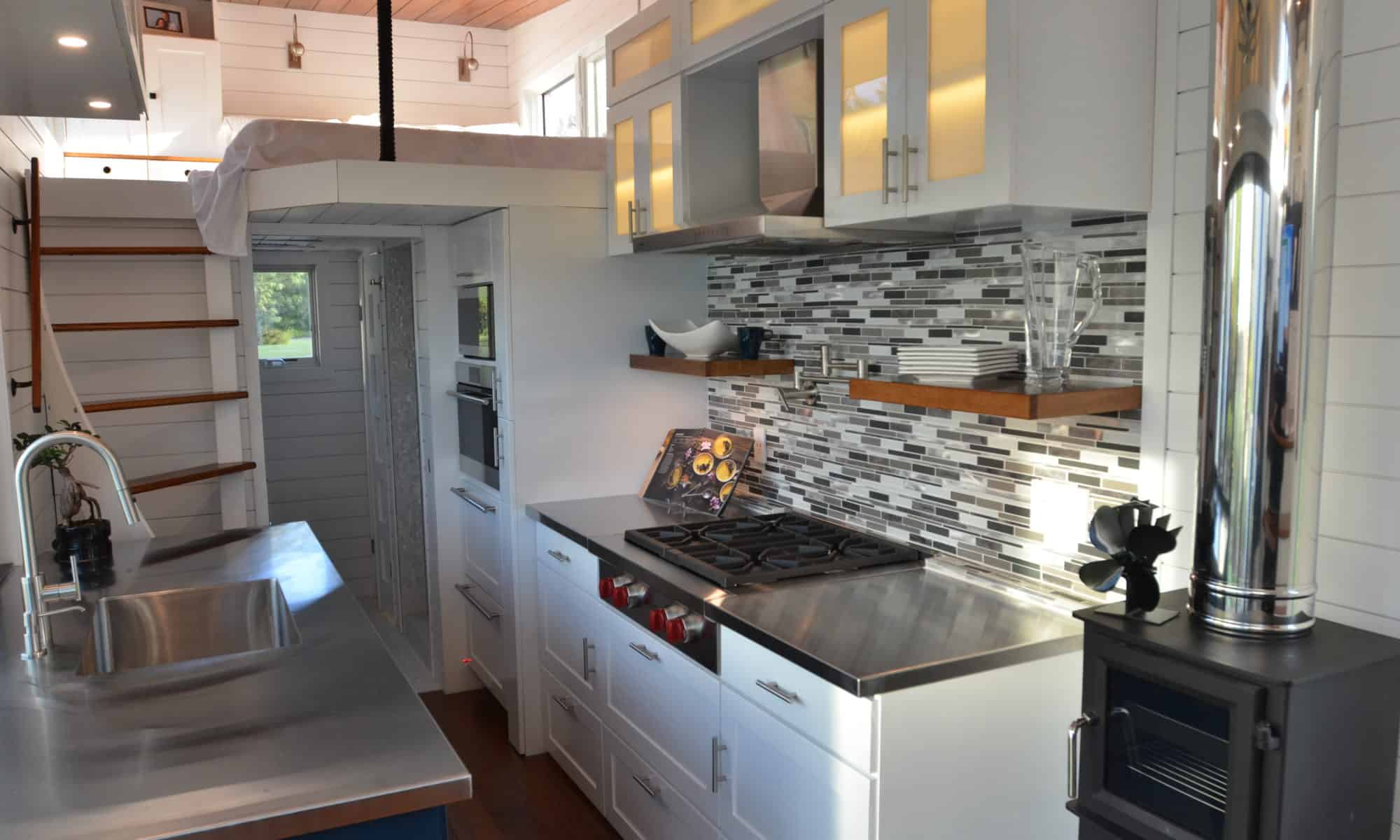Our Tesla batteries, all electrical connections, solar system, home automation, and wireless infrastructure are just in front of the gooseneck. We extended the gooseneck floor about 20″ (51 cm) to make a closet of sorts. It was important that we had good and easy access to this area in case we needed to make any adjustments or work on the equipment. We also needed to have a set of substantial, 2′ (61 cm) wide, stairs to get up to gooseneck. Initially we had thought of having them pivot upwards. However, this proved rather challenging given the weight and limitations on how we could build the frame.
After seeing an Instagram post of someone having a sliding stairway to reveal a clothes closet, we knew we had to build it. But how do we make it sturdy and easy to use? After discussing some concepts we came up with a design that incorporated upper and lower slide rails for the top of the stairs and caster wheels for the bottom. We used a pocket door slide for the top and an extra part from our bifold window as the base. Adding some additional L-shaped metal bars gave it the needed reinforcement.
We added the wiring for the led lighting and ensured there was enough slack to support it sliding completely to the other side. Because we had not installed the flooring yet, we had to put down some temporary pieces of wood to simulate the height in order for it to stay leveled.
As you can see here, it slides quite effortlessly from side to side revealing all that is behind. You can also see that the wall side is completely open. We placed brackets under the stairs, secured the risers to the treads, and installed support braces on the side wall to ensure that when stored it is solid to walk on with no issues.


